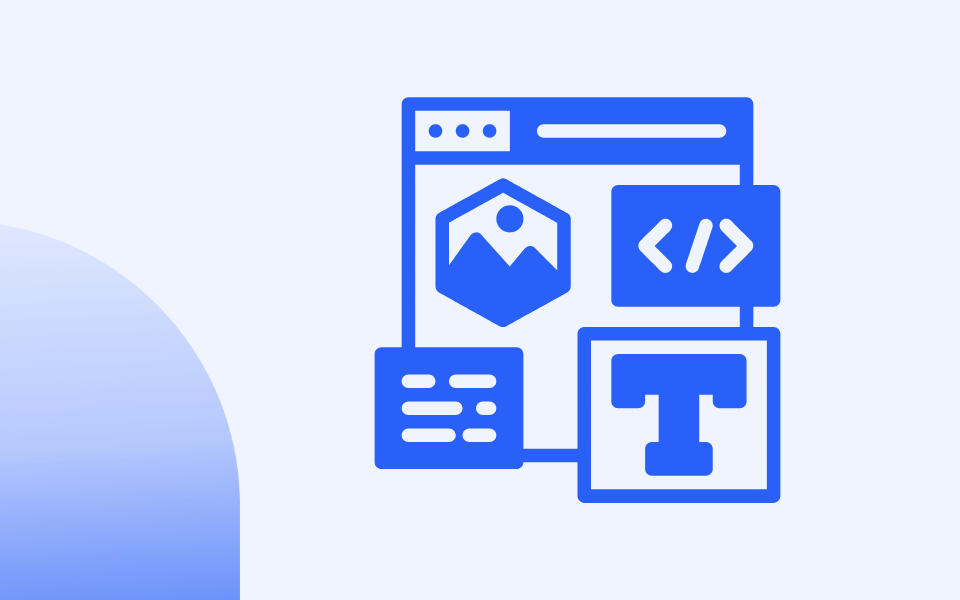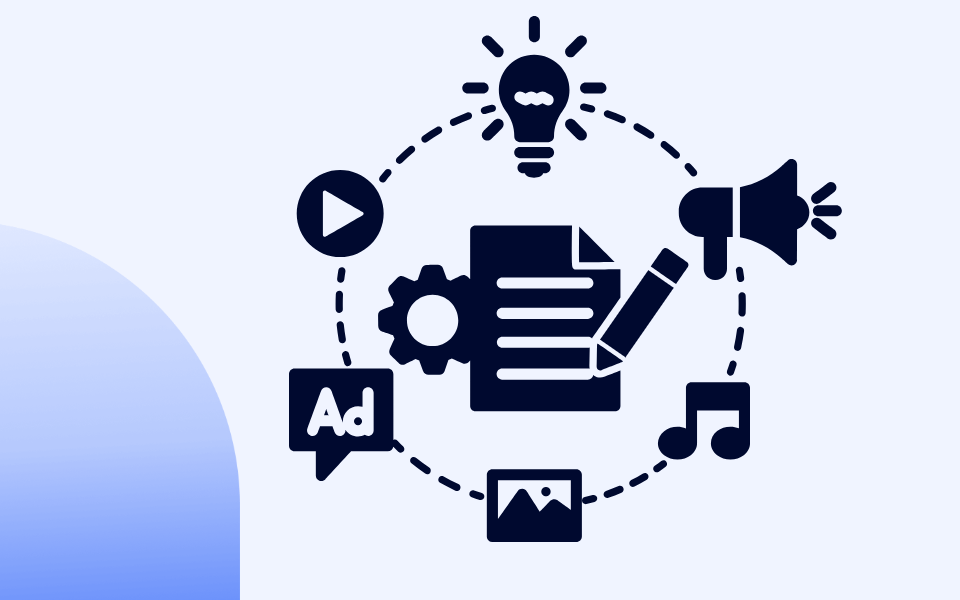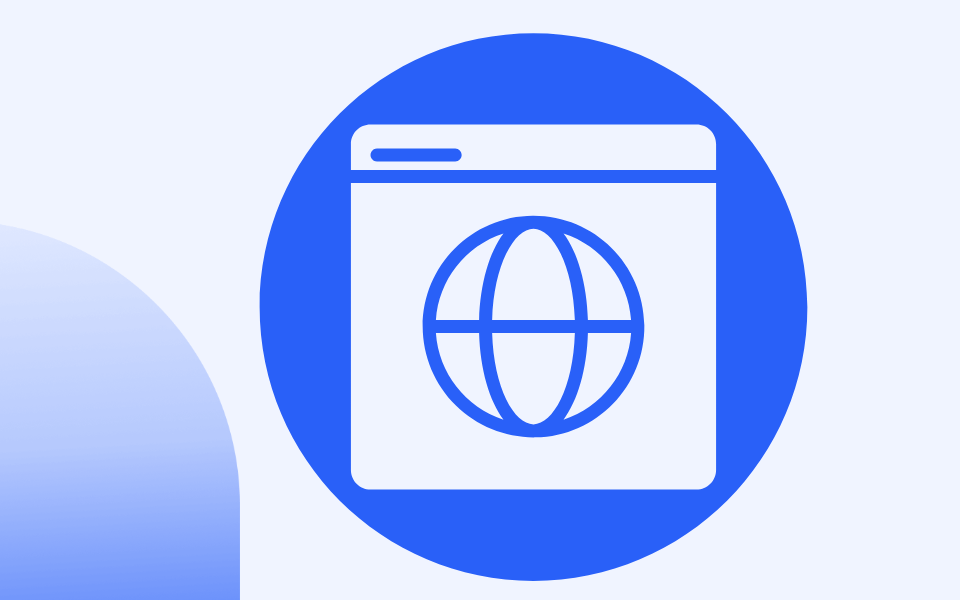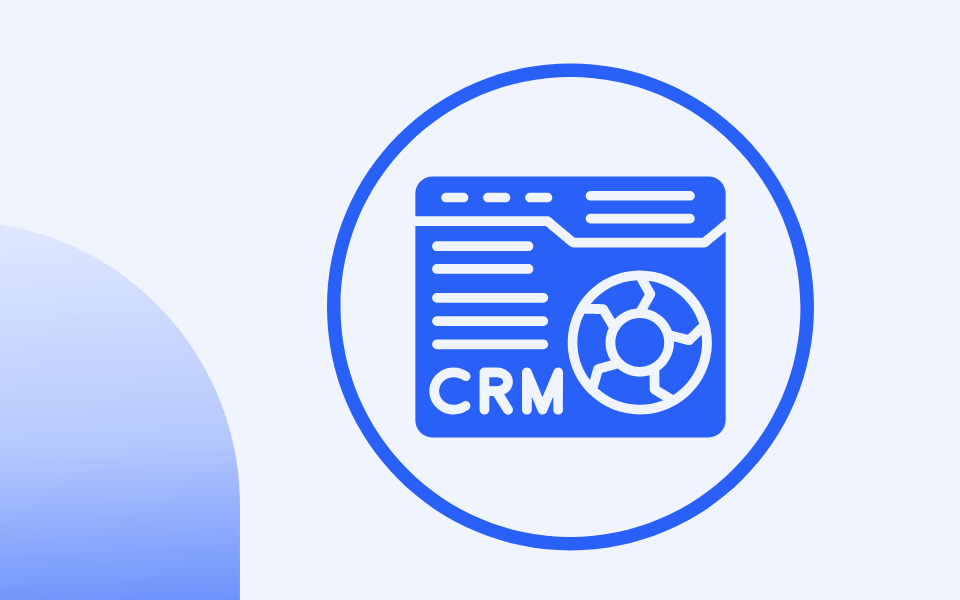What is the HubSpot Marketing Hub? [2025]
HubSpot's Multilingual Website Tools: Simplify Global Expansion

Managing a multilingual website feels like a constant juggling act.
Plugins, translation tools, and endless updates—all of it add complexity and risk.
But what if you could skip the chaos?
Imagine a platform that streamlines your workflow, eliminates translation errors, and keeps your branding consistent across languages.
HubSpot’s multilingual website tools do just that.
- How HubSpot Makes Managing a Multilingual Website Easy
- Why Traditional Multi-Language Websites Are a Hassle
- HubSpot vs. Traditional Tools: What’s the Real Cost?
- Key Features of HubSpot’s Multi-Language Tools
- How to Create Multi-Language Websites with HubSpot
- How to Optimize Content for Multilingual Websites
- International SEO for Multilingual Websites
- Measuring Success Across Languages
- Expand Globally with HubSpot’s Breeze AI
- Take the First Step Toward Global Growth
How HubSpot Makes Managing a Multilingual Website Easy
1. Reach New Markets
Are you thinking about expanding into new regions?
HubSpot makes it simple to create tailored experiences for diverse audiences.
Imagine you’re a European company breaking into Latin America—HubSpot lets you translate your website and blogs into Spanish and Portuguese, helping potential customers feel at home.

2. Deliver a Better Site Experience
Who doesn’t love a personalized touch?
When your website speaks someone’s language and reflects their culture, they’re more likely to trust you—and trust leads to engagement.
HubSpot’s translation tools help you create culturally relevant content that builds connections and encourages conversions.
3. Manage Everything in One Place
Are you tired of juggling plugins and tools? With HubSpot’s Global Content Editor, you can manage all your language versions from a single dashboard.
Whether editing, publishing, or updating, it’s all streamlined to save time and keep your brand consistent worldwide.
4. Improve Your SEO, Globally
Did you know a multilingual website can improve search rankings?
HubSpot helps you nail the details—like hreflang tags, metadata, and localized URLs—so you can rank higher in region-specific searches.
The result?
More visibility for your business in the markets where it matters most.
5. Grow Without Limits
As your business scales, your website should, too.
HubSpot’s multi-language features grow with you, whether you add languages, launch in new regions, or coordinate with teams worldwide. It’s a flexible solution built for growth.
Why Traditional Multi-Language Websites Are a Hassle
If you’ve ever tried managing a multi-language website with disconnected tools, you know how frustrating it can be. It’s not just inefficient—it’s expensive, inconsistent, and risky.
1. Plugins Make Things Messy
Are they using third-party plugins for translations?
Sure, they might seem like a quick fix, but they often cause more problems than they solve.
Think of compatibility issues, slower page loads, and constant maintenance headaches.
Plus, there’s always the looming risk of security vulnerabilities.
2. Your Visitors Get Mixed Signals
Have you ever visited a site where the navigation menu looked completely different in another language?
It’s confusing. It's tough to keep things consistent when relying on multiple translation tools. Visitors lose trust when your branding feels disjointed.
3. Content Updates Become a Nightmare
Imagine this: You update your homepage in one language, but the changes don’t reflect in others. Now, you’re stuck chasing down outdated content everywhere.
With a centralized system, staying synchronized feels possible.
4. Security Takes a Hit
Every extra tool you add opens a new door to potential vulnerabilities.
Third-party translation tools often need additional permissions, increasing the chances of data breaches or website issues.
5. It Costs More Than You Think
The costs of using separate tools add up fast—monthly subscriptions, troubleshooting, and time spent managing everything manually.
What starts as a simple setup can quickly spiral into an expensive mess.
HubSpot vs. Traditional Tools: What’s the Real Cost?
Managing a multilingual website on a CMS like WordPress isn’t just time-consuming; it can become shockingly expensive, depending on the scope and complexity.
Let’s walk through a real-world scenario to put the costs into perspective. Imagine you’re localizing a 100-page, 100,000-word WordPress website into another language.
Here’s an estimate of what it would cost to translate:
Translation Costs
- Basic languages (e.g., English to Spanish): €9,000–€13,500
- Complex languages (e.g., English to Japanese): €18,000–€27,000
- WordPress Multilingual Plugin (WPML): €70–€140/year
- Developer costs (setup + integration): €1,350–€4,050
SEO Optimization
- Keyword research in target language: €450–€1,350
- Meta tag translation and optimization: €450–€900
Media Localization
- Image text translation: €180–€450
- Video subtitling or dubbing: €450–€1,800 per video
Quality Assurance
- Proofreading and editing: €2,700–€4,500
- Bug testing: €450–€1,350
Total Cost: €14,000–€45,000
While traditional translation costs can be daunting, HubSpot offers a more cost-effective approach with Content Hub Professional, which costs €441/month.
Yes, it's an investment, but it includes powerful tools that streamline the entire process:
- The Global Content Editor keeps all your content organized in one place, no extra plugins needed
- DeepL AI translations give you a solid first draft in minutes instead of weeks
- Built-in features handle technical SEO, with hreflang tags and localized metadata included
Think of it this way:
For the cost of translating one complex website (€14,000–€45,000), you could run HubSpot's Content Hub for years, managing unlimited translations and updates across languages.
Please note that AI translations still need human review for accuracy, regardless of your chosen solution. However, the time and cost savings compared to traditional methods are significant.
By using DeepL and human translators, you'll catch cultural nuances and idioms, maintain your brand voice, and ensure your message resonates with local audiences.
Key Features of HubSpot’s Multi-Language Tools
Language Variations for Pages and Blogs
HubSpot makes it easy to manage multilingual content.
You can create language-specific variations for any webpage or blog post, with each version linked to the original.
This keeps your structure organized and ensures you’re not duplicating efforts when updating content.

Global Content Editor
HubSpot’s Global Content Editor lets you view, edit, and publish all your language variations from a single dashboard.
It’s designed to streamline your workflow and maintain consistency across regions.

Language Switcher for Visitors
Want your audience to find their preferred language effortlessly?
HubSpot’s Language Switcher Module makes it easy for visitors to toggle between languages on any device, improving their experience on your site.
AI-Driven Translations
HubSpot integrates with DeepL, a leading AI translation tool, to generate quick and accurate translations.
These AI drafts can be refined by regional experts, saving you time while ensuring cultural accuracy.
Localized Knowledge Base Articles
With HubSpot’s Service Hub, you can create multi-language knowledge base articles to support customers in their preferred language.
This improves satisfaction and reduces the workload for your support team.
Integrated Workflows for Global Teams
Need forms or workflows that adapt to different languages?
HubSpot ensures seamless integration with its CRM and marketing tools so your global teams can collaborate effectively without jumping through hoops.
How to Create Multi-Language Websites with HubSpot
Creating a multilingual website with HubSpot is straightforward when you follow these steps. Let’s walk through the process:
Set Up Your Language Settings
Start by enabling multi-language support in your HubSpot account.
You’ll need to define your default language and add any additional languages your website will support. This will set the foundation for effectively managing content variations.
Choose the Right Domain Structure
Decide how you’ll organize your site for different regions:
- Subdomains (e.g., fr.yourdomain.com)
- Subdirectories (e.g., yourdomain.com/fr)
- Regional Domains (e.g., yourdomain.fr)
HubSpot allows flexibility here, so choose the structure that aligns with your strategy.
Create Language Variants
With HubSpot’s Global Content Editor, duplicate your pages and blog posts to create language-specific versions.
You can preserve the original layout and design, ensuring a consistent look across all languages.
Add the Language Switcher
Place the Language Switcher Module in a prominent location, like your website header, to make it easy for visitors to navigate between languages.
Test it on multiple devices to ensure it works seamlessly.
Organize Your Content Strategically
Use clear naming conventions for your pages and files. For example:
- English version: yourdomain.com/services
- French version: yourdomain.com/fr/services
This helps both your team and search engines understand your website’s structure.
Avoid Common Pitfalls
Translation Quality: Always have a native speaker review your translations to catch cultural nuances and potential errors.
Thorough Testing: Test your localized pages for functionality, design, and user experience before publishing.
Scalability: Plan for future expansions to avoid reworking your setup.
How to Optimize Content for Multilingual Websites
Creating a multilingual website isn’t just about translation—it’s about managing your content efficiently and ensuring it resonates with your audience.
Here’s how you can optimize your workflow:
Build an Organized Translation Workflow
Think of translation as a project, not just a task. Start by creating a workflow that includes:
1. Content Preparation: Identify which pages or posts must be translated and prioritized based on their impact (e.g., homepage, pricing pages).
2. Task Assignment: Assign specific sections to translators, reviewers, and QA specialists.
3. Quality Assurance: Establish a review process to ensure accurate and culturally relevant translations.
For example, use HubSpot’s Tasks Tool to assign responsibilities and track progress within your team.
Maintain Consistency Across Languages
Inconsistent branding can confuse your audience and weaken your message.
Use HubSpot’s Global Content Editor to manage shared components like headers, footers, and calls-to-action, ensuring they look and feel the same across all languages.
Additionally, follow a style guide to standardize tone and terminology. This allows your team to audit content to regularly fix inconsistencies in translations or design.
Adapt Content for Local Audiences
Translation is just the first step. To truly connect with your audience, localize your content to reflect their culture. Consider:
1. Imagery: Use photos or graphics that resonate with specific regions.
2. Messaging: Adjust tone, idioms, and examples to match local norms.
3. Cultural Preferences: For instance, positive colors or symbols in one culture may have negative connotations in another.
HubSpot’s flexibility makes it easy to swap out localized assets without affecting your overall site structure.
International SEO for Multilingual Websites
If you want your multilingual website to perform well in search engines, you need more than just great content. Here’s how HubSpot helps you optimize your SEO for global success:
1. Simplify Global SEO with HubSpot’s Tools: SEO for multilingual sites starts with getting the technical details right, and HubSpot makes this easy by automating:
2. Hreflang Tags: These tags tell search engines which version of your site to show in specific regions or languages, ensuring your content reaches the right audience.
3. Language-Specific Metadata: Add custom titles, meta descriptions, and keywords for each language variation.
4. Optimized URL Structures: HubSpot lets you structure URLs by subdirectories, subdomains, or regional domains, depending on your strategy.
For example, a maritime technology company targeting Germany can set its URL as yourdomain.com/de with the correct hreflang tags for maximum visibility.
5. Tailor Your Strategy for Local Search Engines
Ranking on Google is great, but what about region-specific search engines? HubSpot’s tools make it easy to:
Adapt content to meet the algorithms of these search engines.
Conduct localized keyword research in your target language to align your content with local search trends.
Follow Best Practices to Stay Ahead
Avoid common pitfalls that can hurt your rankings:
1. Avoid Duplicate Content: Use hreflang tags correctly to prevent search engines from penalizing you for similar content in different languages.
2. Keep XML Sitemaps Updated: Ensure all language versions of your pages are included in your sitemap so search engines can index them properly.
3. Optimize Internal Linking: Use language-specific anchor texts and navigation to guide users to the right content.
With HubSpot, you can manage all these aspects in one platform, saving you time while improving your site’s performance globally.
Measuring Success Across Languages
Tracking performance is critical to ensure your multilingual strategy is driving results. Here’s how you can measure success effectively:
Monitor the Right Metrics
When managing a multilingual website, focus on key metrics that reveal how your localized content performs:
1. Engagement Rates: Are visitors spending time on your site? Which language versions see the most activity?
2. Conversion Rates: How well is each language version turning visitors into leads or customers?
3. User Journeys: Are visitors navigating your site as intended, or are there drop-offs specific to particular languages or regions?
For example, if the French version of your pricing page has a lower conversion rate than other versions, it might indicate a need for messaging refinement or cultural adaptation.
Leverage HubSpot’s Analytics
HubSpot simplifies multilingual performance tracking with:
Multilingual Tracking: View traffic, engagement, and conversion metrics for each language version from a single dashboard.
Regional Dashboards: Customize your reports to analyze data by region, helping you pinpoint areas for improvement.
A/B Testing: Test variations of localized content to see what resonates best with your audience. For instance, you can experiment with different headlines or CTAs on your Spanish landing page to optimize conversions.
With HubSpot’s robust analytics tools, you can continuously optimize your multilingual website for better performance and growth.
Expand Globally with Breeze AI
Expanding your business to new markets can be a significant investment, but HubSpot's Breeze AI makes the process much more manageable by quickly identifying relevant sales opportunities in new markets.
Think of it as having an intelligent assistant who helps you understand your customers, spot new opportunities, and make better choices as you expand worldwide.
Let's look at how Breeze AI can help you reach customers in different countries:
Say you want to contact companies in Germany or Brazil. Breeze AI helps you define your target markets and list relevant companies to add to HubSpot.
Breeze also shows you which companies are checking out your website. Breeze AI monitors who's visiting your site, looking at your prices, and reading your content.
For example, if a company from Singapore keeps coming back to your website, you'll know they're interested and can reach out at just the right time.
Getting new customers is also easier because Breeze AI makes your forms simpler to fill out. Instead of asking people to type in everything, Breeze will automatically enrich a contact or company record.
In this way, you don’t have to start building your database of leads from scratch when entering a new market.
Take the Step Toward Global Growth
Managing a multilanguage website doesn’t have to be overwhelming.
With HubSpot’s all-in-one platform, you can streamline content management, deliver culturally relevant experiences, and optimize for global search engines—all in one place.
Here’s how to get started:
- Audit Your Current Setup: Review your existing tools, workflows, and performance.
- Plan Your Migration: Map your content, preserve SEO, and test thoroughly before launching.
- Partner with HubSpot Experts: Work with specialists to ensure a smooth implementation.
- Focus on High-Impact Pages: Start small by localizing your most important pages, then expand.
By investing in HubSpot’s multi-language tools, you’re not just creating translations—you’re unlocking the potential to engage new markets and position your brand as a global leader.
Ready to take the next step? Audit your current setup and explore HubSpot’s resources. Your global audience is waiting.


